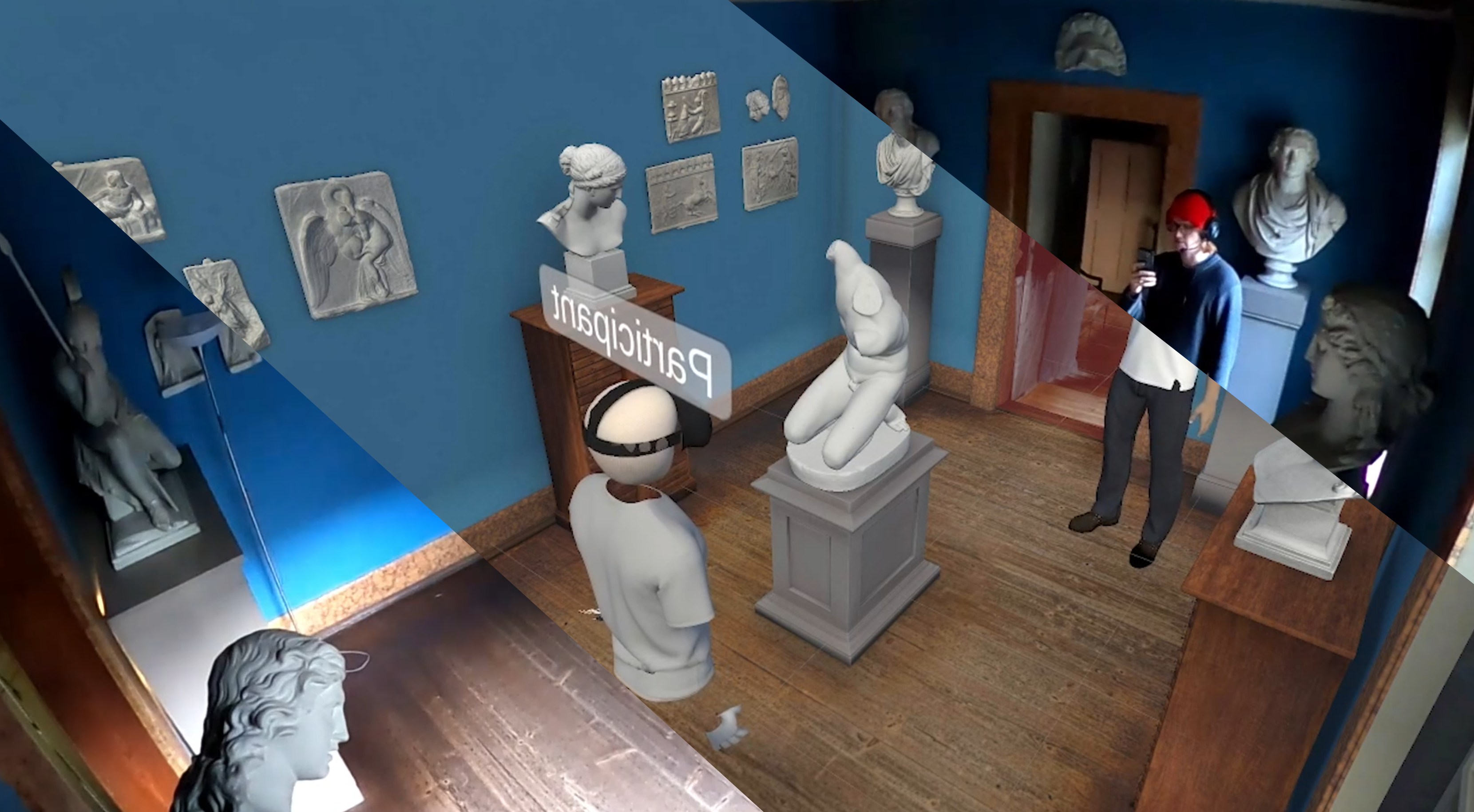The combination of smartphone Augmented Reality (AR ) and Virtual Reality ( VR ) makes it possible for on-site and remote users to jointly and simultaneously explore a physical space and its digital twin through an asymmetric Collaborative Virtual Environment (CVE). In this paper, we investigate two spatial awareness visualizations to enable joint exploration of a space for dyads consisting of a smartphone AR user and a head-mounted display VR user. Our study revealed that both, a mini-map-based method and an egocentric method based on a compass needle and a path visualization, enabled the on-site visitors to locate and follow the virtual companion reliably and quickly. Furthermore, the embodiment of the smartphone user by an inverse kinematics (IK) avatar allowed the use of natural gestures such as pointing and waving which was preferred over text messages by the participants of our study. In an expert review in a museum and its digital twin we observed an overall high social presence for both the VR and the on-site smartphone AR user which confirms that the awareness visualizations and the embodiment of the smartphone user as an IK avatar worked well and that on-site and remote visitors could successfully communicate and collaborate with each other.
UniteXR: Joint Exploration of a Real-World Museum and its Digital Twin

